Solukhumbu: The Land Of The Sherpas
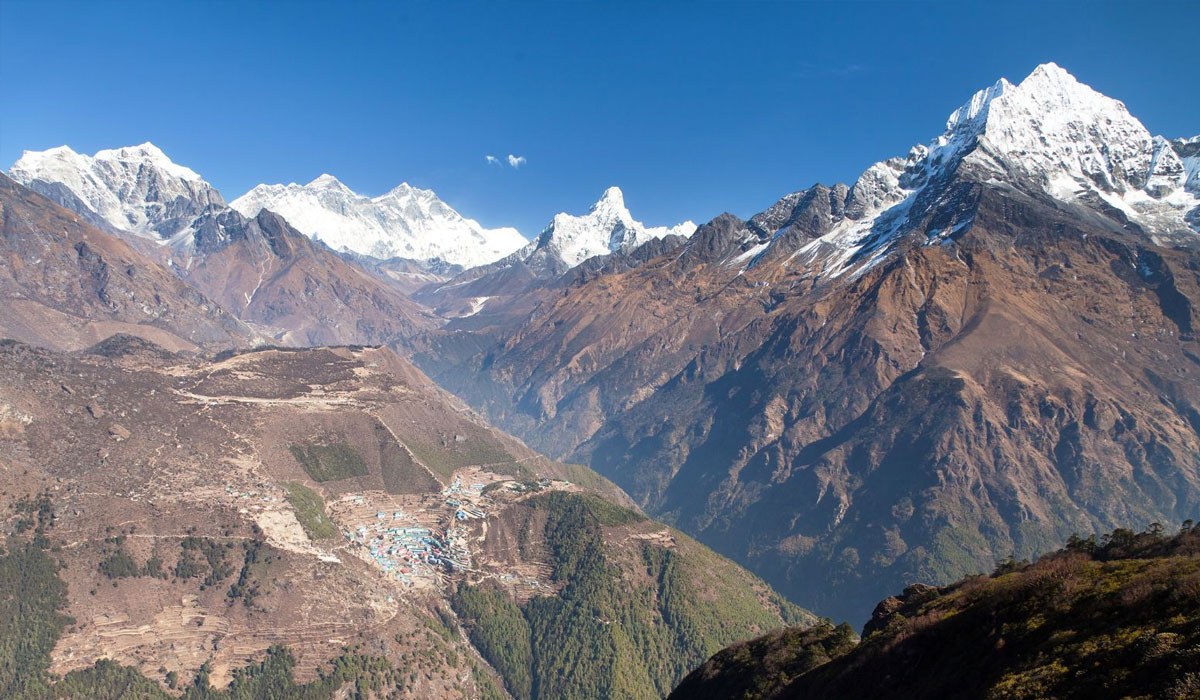
Solukhumbu is situated in the Koshi Province of eastern Nepal. The district is comprised of two sub-regions, namely Solu and Khumbu. The Sherpas of the district also famously call the place shar khum bu dzong. Solukhumbu is dominated by Sherpas. Before the place became a home to Sherpas, it was a mere part of the Himalayan region in Nepal. Hence, this community in Nepal is much more responsible for being a habitat for people. Sherpas have been running their day-to-day livelihood from Solukhumbu, and they are also the ones to establish a celibate monastery of Tengboche in the district.
There are many interesting facts about Solukhumbu, which is also the land of the Sherpas. Make sure to read till the end of this article to learn more about Solukhumbu and how it became the land of the Sherpas.
History of Solukhumbu
Solukhumbu was not always a homeland for the Sherpas. There were several inhabitants from the Kirant community who lived in the valley way before the Sherpas. In fact, the early and medieval eras of Kiranti history are full of rich pasts from the Kirant kingdoms that once existed in the Solukhumbu district of Nepal. Prior to the unification of Nepal by King Prithvi Narayan Shah, the now Himalayan district in Sagarmatha was a part of Chaudandi of Majh Kirat (Khambuwan). Hence, it is concluded that Solukhumbu was initially not a part of Nepal but of Majh Kirat Khambuwan (central province or region of Kirat Kingdoms).
It was finally in 1773 AD that the Shah attacked and captured the land and made it a part of Nepal with his vision of growing Nepal. It was only in 1962 that the old East No. 3 district was turned into the new Solukhumbu district. Besides Solukhumbu, Okhaldhunga and some parts of Khotang were also known to be parts of the East No. 3 district. Solu and Rawa thums (counties) helped in the formation of the Solukhumbu district.
Sherpas of Solukhumbu
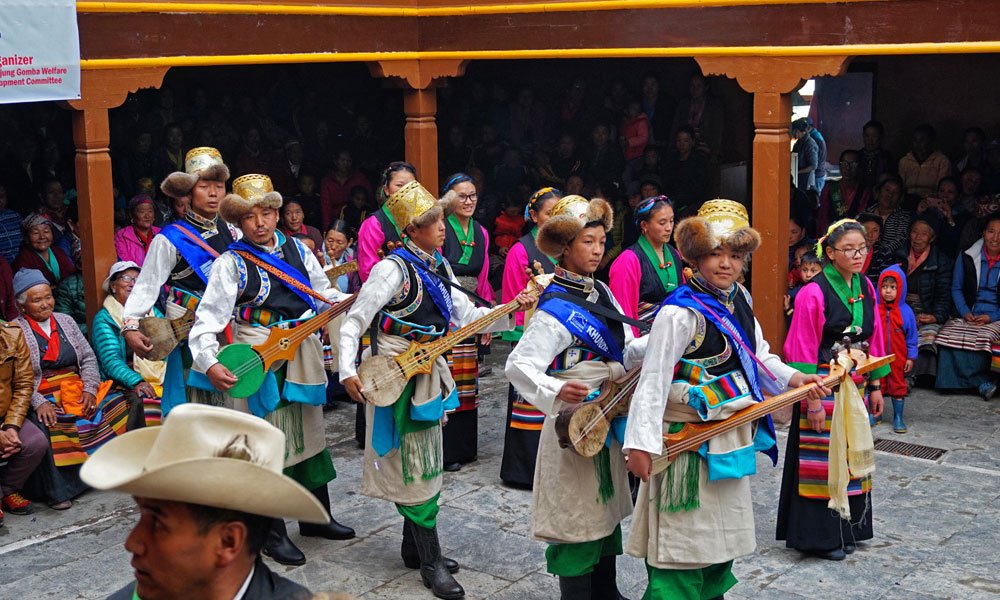
Around 600 years ago, Sherpas from Tibet migrated to Nepal and found grace in the land of Solukhumbu. The Sherpas got their name from two words, Sher which means East, and Pa which means People. These people of the east may now have settled and made a whole lot of population throughout the Himalayan part of Nepal, but their very first settlement dates back 600 years ago when they came to the Khumbu region.
The Sherpas did not find solace in communicating and finding ways to get to the people in other parts of Nepal all too soon. These nomadic Tibetan migrators lived in isolation for several years after coming to Nepal. However, they started to establish close relations with the British people in the 1920s. These relationships were fostered by the growth of mountaineering activities around Mount Everest. There were several British expeditions, and they were responsible for guiding and carrying their baggage when they were on the journey to summit the tallest mountain in the world.
Sherpa people were almost unknown to the world; even a lot of people in Nepal did not know much about them until finally, mountaineer and the first person to ever climb Mount Everest alongside Sir Edmund Hilary, Tenzing Norgay Sherpa, brought forth the name of Sherpas and made themselves recognizable to the whole world.
The growing number of expeditions and climbing sessions in Nepal also increased the interest of Sherpas living in the Khumbu region to find a passion and generate good revenue with mountaineering activities. Over the years, despite several transformations of their residence and the times, this community has been successful in preserving and protecting their culture. The people in Solukhumbu district, who are now mostly Sherpas and rarely anyone from other communities, have been promoting their culture and traditions not just among themselves but also among those who come to visit the mountains from abroad or from Nepal itself.
They not only celebrate their festivals, but they also have been practicing their culture to a deeper extent through which Sherpas throughout the country see Solukhumbu as the land of Sherpas. While the living conditions in Solukhumbu are not the most favorable in comparison to other developed parts of Nepal, the people in this district in the Khumbu region have grown used to the conditions as well as the way of livelihood here. While most of the Sherpas first started as farmers, traders, and monks when they shifted to Solukhumbu, they went on to pursue mountaineering and have been able to earn a lot by becoming guides, porters, and establishing tea houses and hotels in the Solukhumbu area.
History of Sherpas in Solukhumbu
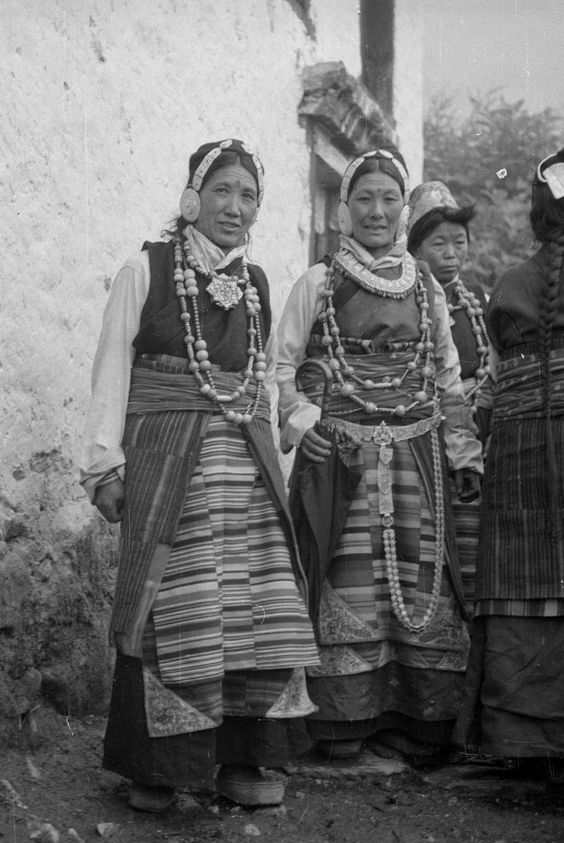
The Sherpas in Solukhumbu have spent a century in mountaineering activities, which is also what they are most famous for all around the world. Likewise, these Sherpas are new inhabitants who migrated from Tibet only around 600 years ago from Rongshar to the west and then via the Nangpa La pass. Khumbu valley was the first place they entered when they came to Nepal. A fact that is underlooked about the Sherpas in the Solukhumbu district is that four different clans of Sherpas migrated at different periods of time from Kham of Tibet to Solukhumbu. These four clans of Sherpas belonged to either the Minyagpa clan, Thimmi clan, Sertawa clan, or Chawa clan. Eventually, these clans also separated into 20 different clans, which are all the different clans of Sherpas of the present day.
By the 1400s, Sherpas in Nepal had already gained a great amount of autonomy in the land of Solukhumbu. However, conflicts with China over the past years also affected the Nepal government’s focus and influence on the Sherpa community. By 1976, Sagarmatha National Park was one of the biggest attractions for visitors who belonged to the Sherpa community as well as those who were not from the community. The national park became a great and newly found source of income for the Sherpas.
Morever, Solukhumbu was not always known by its present name. The Sherpas were known as Shyar Khamba, which refers to the people who shifted from the East. And the land they moved to was known as Shyar Khamba, translating to land with the people from the East. The Shyar Khamba residents were slowly called the Sherpas. Though this community has been said to have moved originally from Tibet, a recent Nepal Ethnographic Museum (2001) study proved a fact that these people had been moving from one place to another since their very beginning as Alpine pastoralists and traders. Similarly, it is almost impossible to come to a fixated conclusion as to where Sherpa people originated from, though there are several assumptions associated with it.
Why did Sherpas migrate from Tibet to Solukhumbu?
One of the major reasons why Sherpas migrated from Tibet to Solukhumbu is that there were several feuds against Mahayana Buddhism in Tibet around six hundred years ago. The religious conflicts of the 13th and 14th centuries with regard to this religion led to many people from Tibet moving to the neighboring land. Ü and Tsang were passed before they crossed the Himalayas.
A unique way of life in Solukhumbu
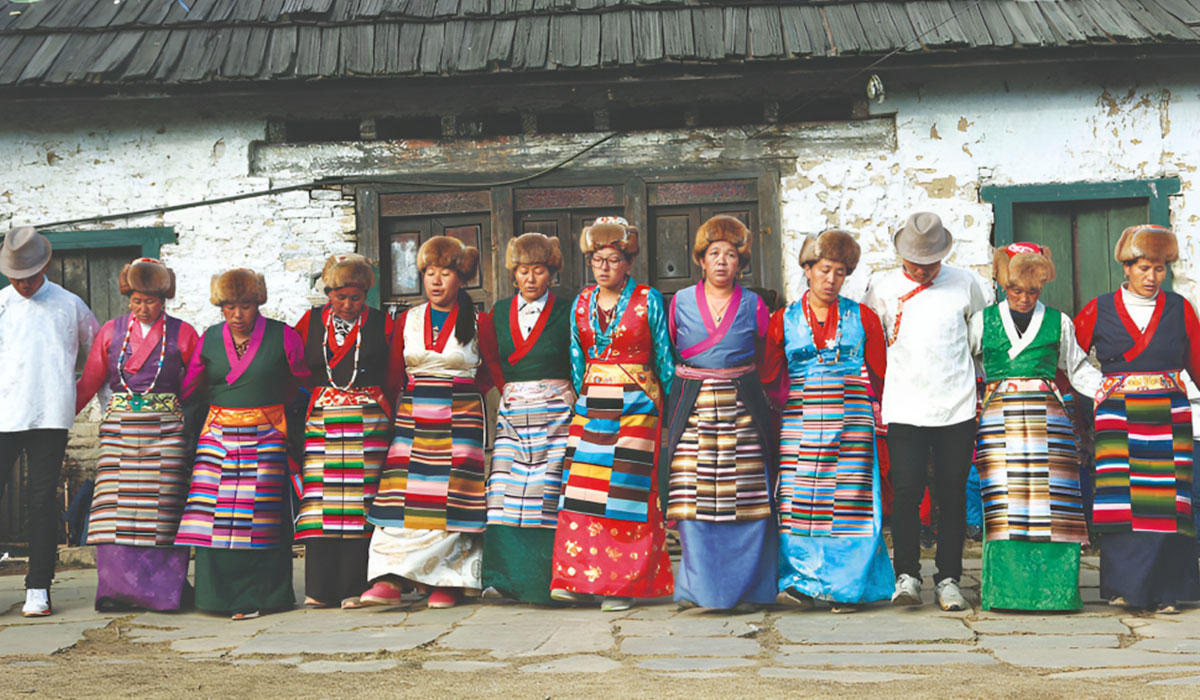
The Sherpas of Solukhumbu have been living a unique way of life. Their respect for their ancestral traditions and nature has brought them very close to both natures as well as a life that not many people in other parts of Nepal live. Urbanization in Nepal has not had any influence on the lifestyle of the Solukhumbu residents, and a lot of them still live under the conditions that they did several years ago. Though rural, there have been several progresses throughout the years among Sherpas of the district.
Sherpas have been facing challenges daily due to their tough living conditions. Although there is a fair share of revenue coming from tourism and mountaineering activities, every day, these local Sherpas go through a war between life and death. Even the traders of Solukhumbu don’t have it easy. Since there is no direct access to the most urbanized place in Nepal, Kathmandu, from Solukhumbu, getting things from the capital city to the mountainous region becomes as tough as it can. Not only are the trails difficult to cross, but several other factors are associated with getting things from urban areas to there, including the high costs and efforts. This is one of the major reasons why anything that you find in Solukhumbu is far more expensive than what you can find in urban places in Nepal.
Further, Sherpas have lost lives throughout the centuries by mountaineering. Despite excelling in mountain climbing and trekking in the areas they’ve lived in for the longest of time, they still cannot overpower the ruthless nature of the mountains at times. Solukhumbu is a land of culture, struggles, and a whole lot of history because of the Sherpa people.
The generosity of the Sherpa community
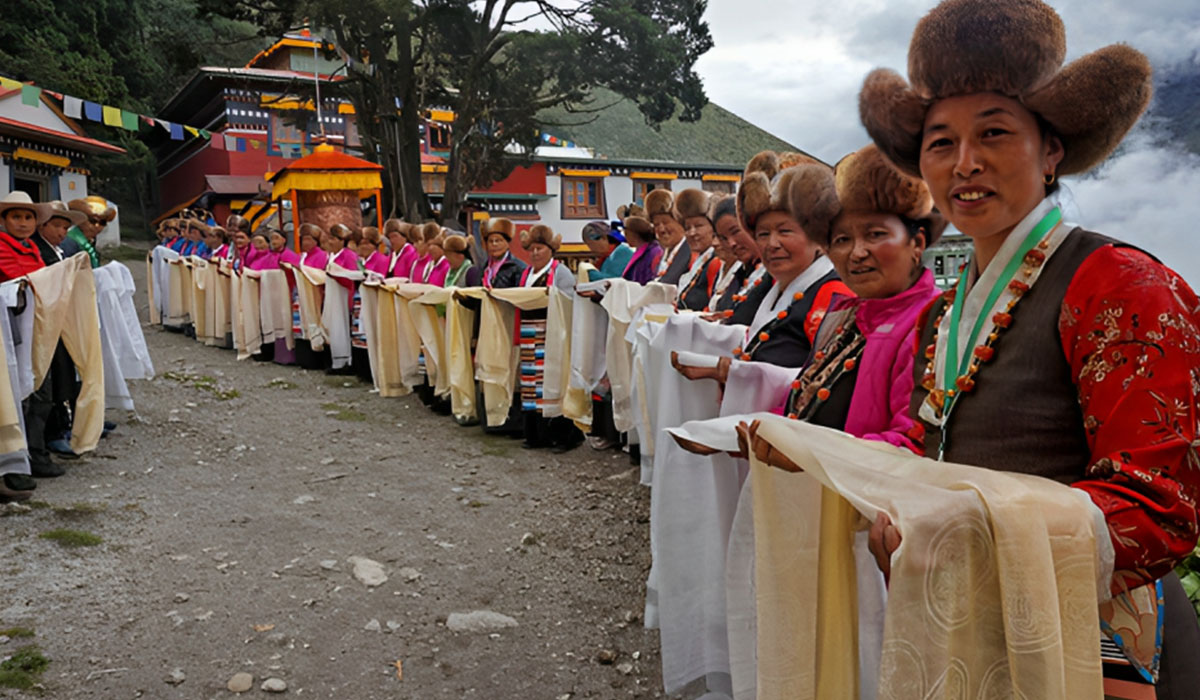
While there are factors as cruel as can be for the people living in Solukhumbu, the Sherpa community has never lost its warmth for the people visiting. The hardships of the people in Solukhumbu teach them the most valuable lessons. Approaching anyone in the village and having them share their life, experiences, and culture is not a chore at all. These Sherpas will receive just about anyone with warmth and generosity. As for the language, most of these people speak Nepali, while few also know how to converse fluently in English. Many others speak in Tibetan language as well.
Lhosar, Dumje, and Mani Rimdu are some of the festivals that the Sherpa community celebrates. There are interesting traditions that people beyond the community are often looking to know more about. Sherpa community has been welcoming of anyone who wants to rejoice and enjoy these festivals with them.
Namche Bazar and Gorakshep (The last village before Everest)

Namche Bazar is basically the most urbanized of all the other villages in Solukhumbu district. There are several modern amenities in the village that attract tourists to stay there whenever they are in the district. Moreover, there are people who use Namche Bazar as their trade hub, wherein a Saturday market, there are hauls of vegetables, dairy, traditional incents, and so on. Many tourists have found joy in buying souvenirs from the Sherpas on their stay in Namche Bazar.
Likewise, one can come close to the outer world beyond the Himalayas when in Namche. Besides the traditional ways of staying in this village, you can also find modern restaurants, cafes, and even advanced and modern hotels here.
Gorakshep, on the other hand, is quite rural in comparison to Namche Bazar. However, this is the last village before Everest. You either have the option to sleep in a tent much further from the Everest Base Camp or to go to Gorakshep, where you can find teahouses and guesthouses for your stay. This village gives a spectacular view of the mountains around as well as serves for a great trekking experience.
Frequently Asked Questions
Why is Solukhumbu famous?
Solukhumbu is famous as the Mountain of tourism.
What is the last village before the base camp?
The last village before the base camp is Gorakshep.
Where are Sherpas from in Nepal?
Sherpas from Nepal are from Tibet.
What are the village names of the Solukhumbu?
The village names of the Solukhumbu are Namche Bazaar, Khumjung, Salleri, Solukhumbu, Bafa, Chheskam, Tapting, and Chaulakharka.
How many mountains are there in Solukhumbu?
There are 120 mountains in Solukhumbu.
Also, read;



